Samosas (also called Sambusas) are a delicious fried pastry filled with lamb and onions. This recipe originates from Djibouti, but no matter where you are in the world, you’ll love this quick and easy appetizer.
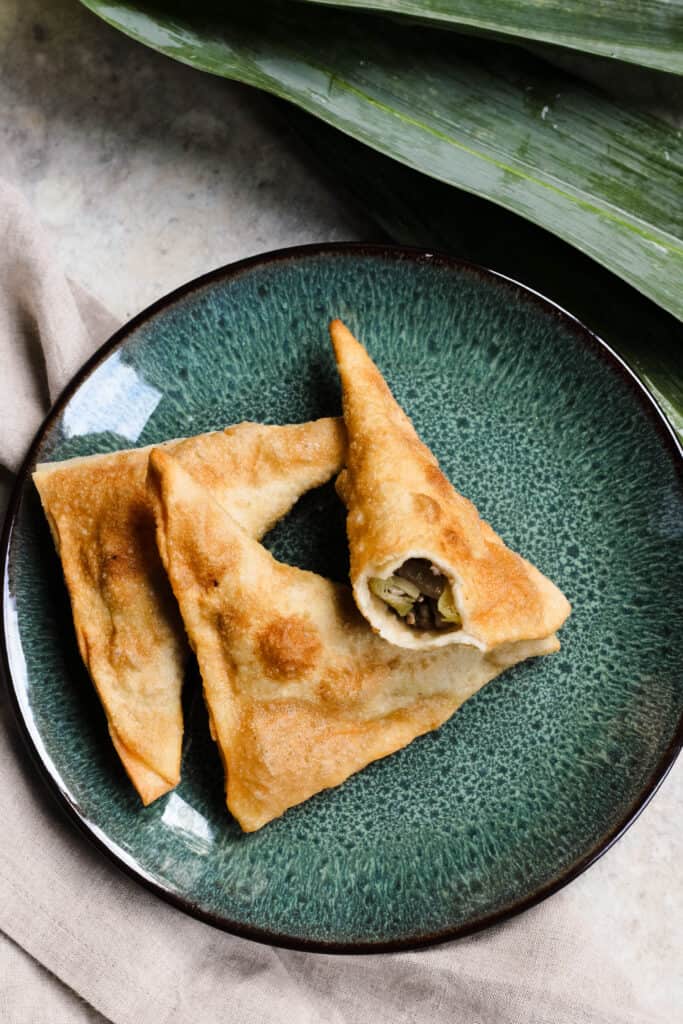
“Hello Reader! I try my hardest to research recipes as best as I can before posting to ensure I am representing each culture correctly. If this recipe is from your country and I have made a mistake or you have suggestions for how to make it more authentic, I would love to hear! Please leave a comment below letting me know what should be different, and I will rework the recipe. It is always my intention to pay homage and respect to each cultural dish that I cook. Thanks for reading!”
Why Make this Recipe
- “Travel” to Djibouti: One of my favorite parts about my blog is learning about other countries through their food! And I’m a true believer that the food is the best way to experience the culture of a country. If you’re not able to travel to Djibouti but still want to experience the country, try making this recipe. Close your eyes and be transported away.
- 30 Minute Recipe: From start to finish, this recipe comes together in 30 minutes. What more could you want?!
- Customizable: In this recipe, I create a filling base with lamb meat and onions/leeks. If you want to add different vegetables to the filling, you have complete autonomy to do so! Ultimately, you can decide. I gave you a great base to start with.
What Ingredients are in this Recipe?
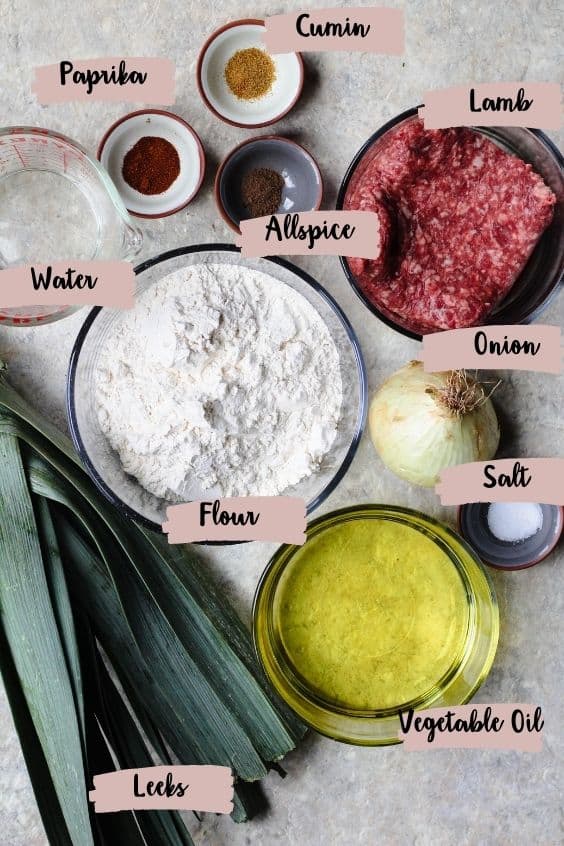
- Lamb: Lamb is my favorite option for ground meat, so I happily added lamb meat to this recipe. If you want to try something a bit easier to find, feel free to sub ground beef. If you want to try a more traditional meat in your samosa, consider trying goat instead. I’ve never made this recipe with goat, but plenty of articles tell me that eating goat is a common practice in Djibouti.
- Leeks: I love working with leeks. They’re not a typical ingredient in my kitchen, but every recipe I make with them (like this Cornbread with Leeksi) turns out spectacularly! When preparing your leeks, take great caution. Leeks are by far the dirtiest vegetable I have ever worked with, and need to be cleaned out very well to avoid getting a mouthful of dirt. Wash and scrub your leeks under cold water. If you are using the leaves of your leeks for any purpose, peel them apart, washing between each leaf. Dirt loves to hide down near the stem and is often missed if the leek isn’t cleaned properly. For more information, check out this video.
How to Make this Recipe
Step 1: Make the Dough
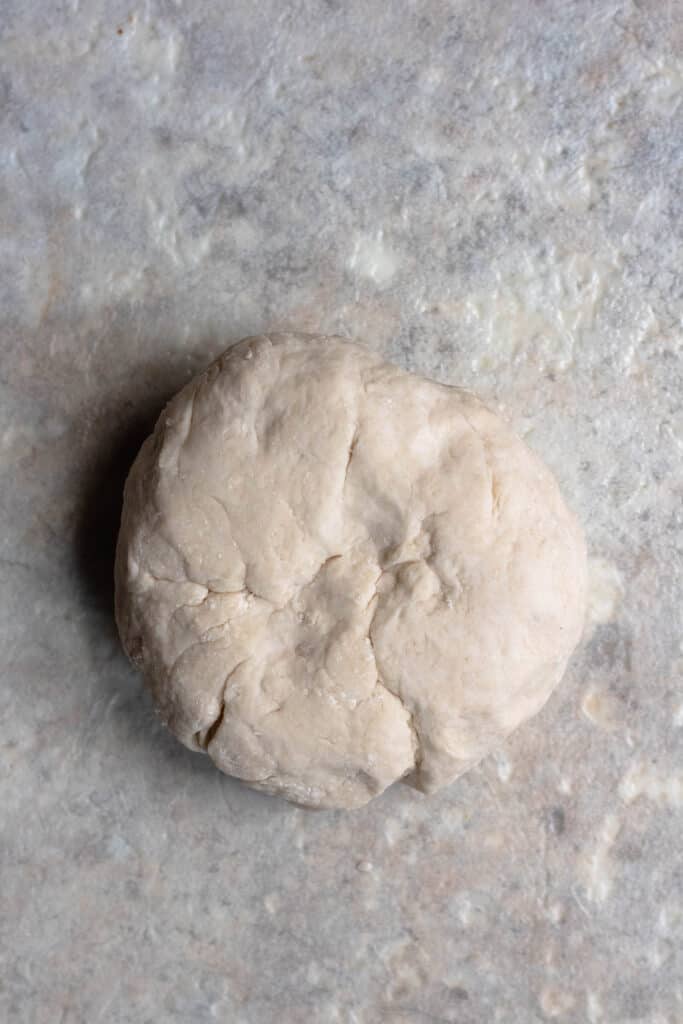
In a medium bowl, mix the flour with the salt water a few tablespoons at a time, using your hands to combine. The dough should come together in a smooth ball that is not sticky or crumbly! Cover with plastic wrap and set aside.
Step 2: Prep the Filling
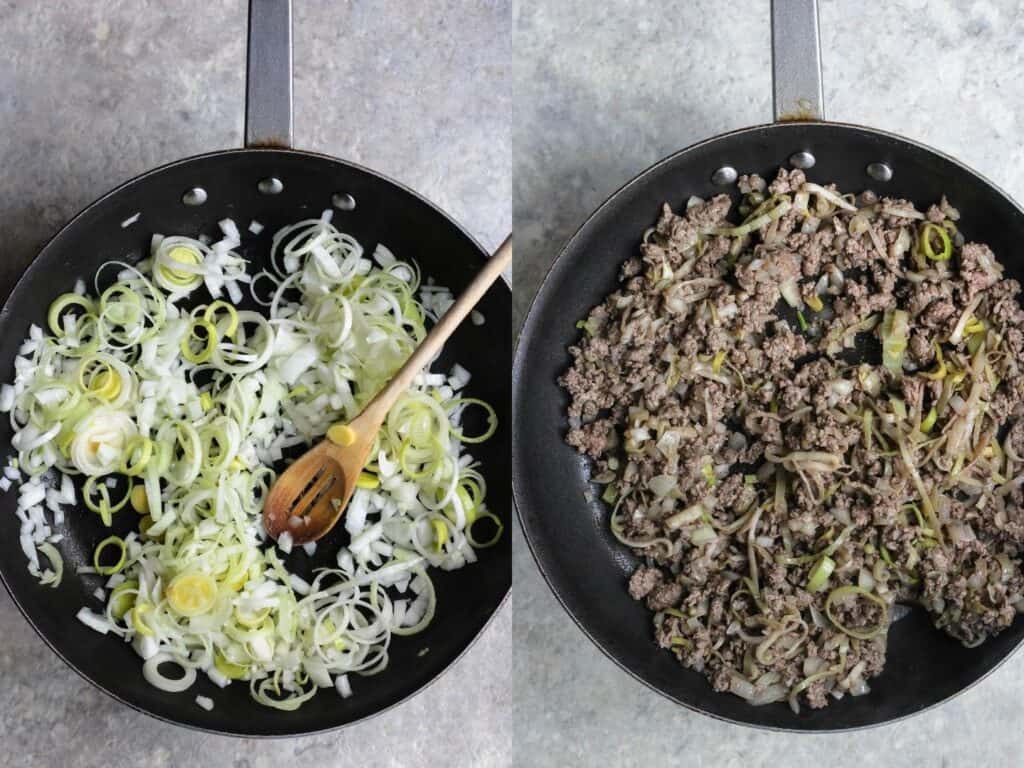
Heat 1 tbsp olive oil in a pan over medium heat. Add the onions and leeks and saute for a few minutes until they begin to cook. Add the seasonings and cook for another minute.
Add the lamb into the pan, using a spoon to break the meat up. Cook until meat is fully browned. Remove from heat.
Step 3: Fold
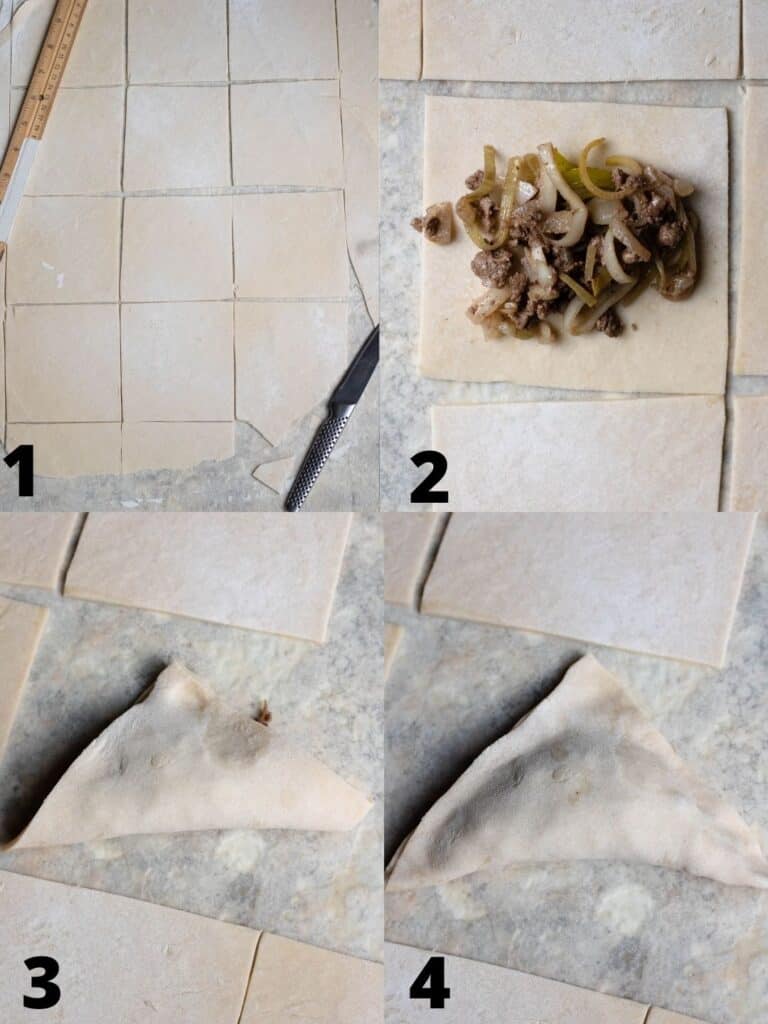
Flour a clean surface and lay your dough onto the surface. Use a rolling pin to roll out your dough as thin as possible, making it almost paper thin. Cut the dough into 4 inch squares, re-rolling the scraps as necessary
Lay your squares on the surface in front of you, and put about 1 tbsp of filling in each. Brush the edges of the square with water. Fold diagonal corners to meet each other, making a triangle. Use your fingers to press the edges together.
Step 4: Fry
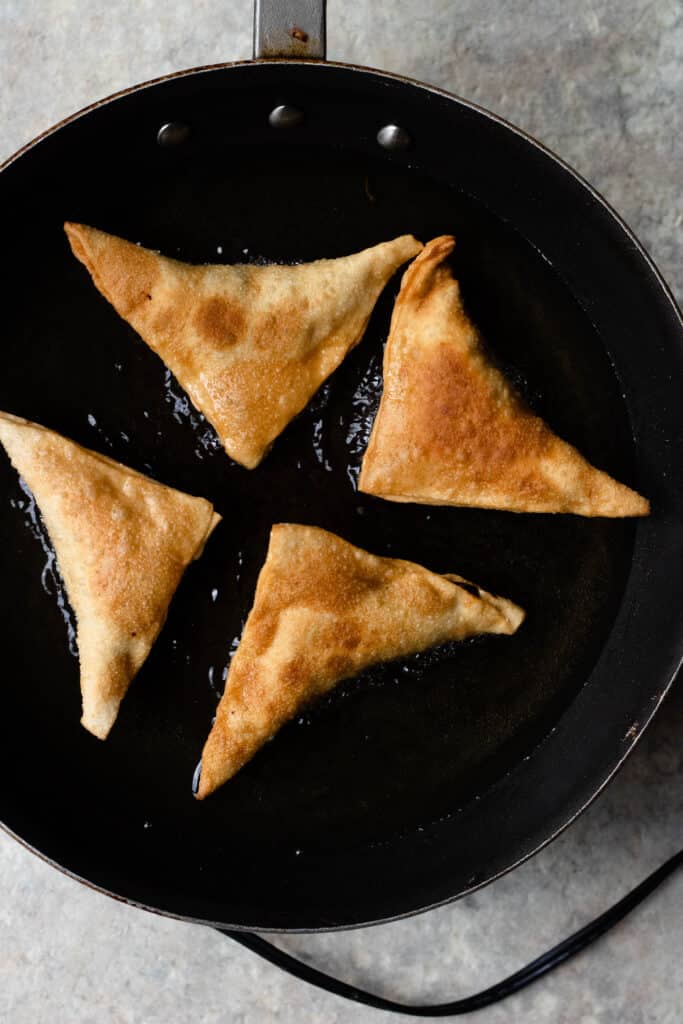
Heat oil in a frying pan until it is hot enough that your test samosa bubbles within 3-5 seconds of being dropped into the oil. Cook until browned on one side, then flip and cook until brown on the other.
Remove to a paper towel-lined plate. Serve and enjoy!
Expert Tips
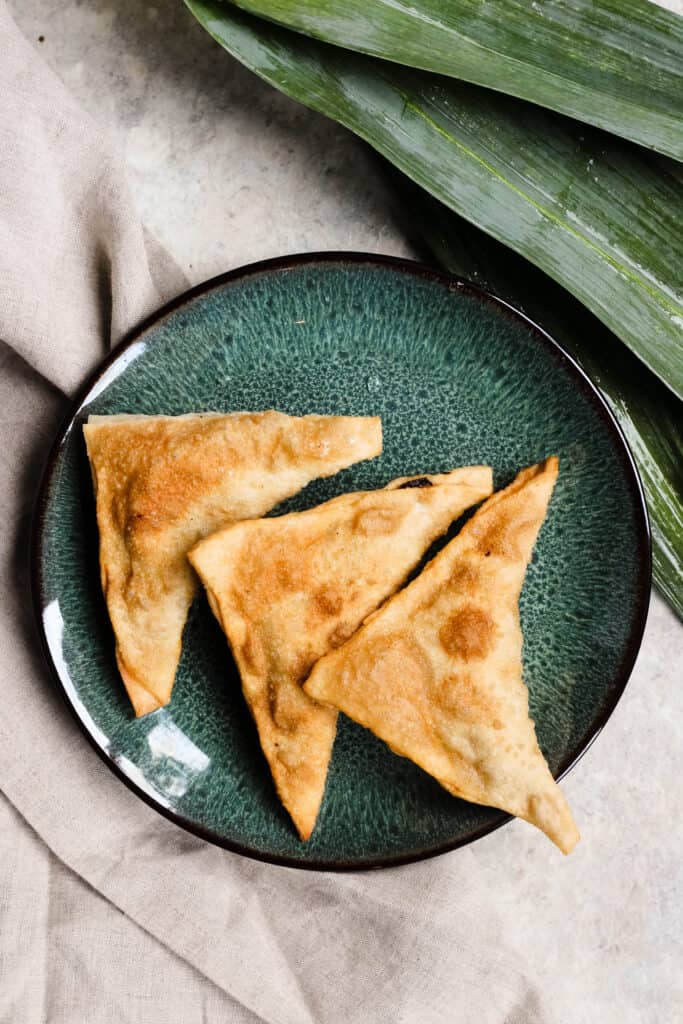
- Reserve a few pieces of your dough in order to test your oil. You want to make sure that your oil is hot enough to fry before adding an entire Samosa into the mix. To do this, reserve some of the dough and add it into the oil. If it begins to bubble after 3-5 seconds, your oil is hot enough to fry!
- To reheat Samosas, place them on an aluminum foil-covered cookie sheet in the oven. Bake at 350 degrees Fahrenheit until warmed through. Microwaving samosa will make them soggy, but this method will achieve perfectly crispy leftover samosas!
- Though not traditionally Djiboutian, Samosas in other cultures are often filled with peas, potatoes, and more! You can even experiment with out of the box ideas. Check out this article with 21 Delicious Samosa Filling Ideas for more inspiration.
Recipe FAQs
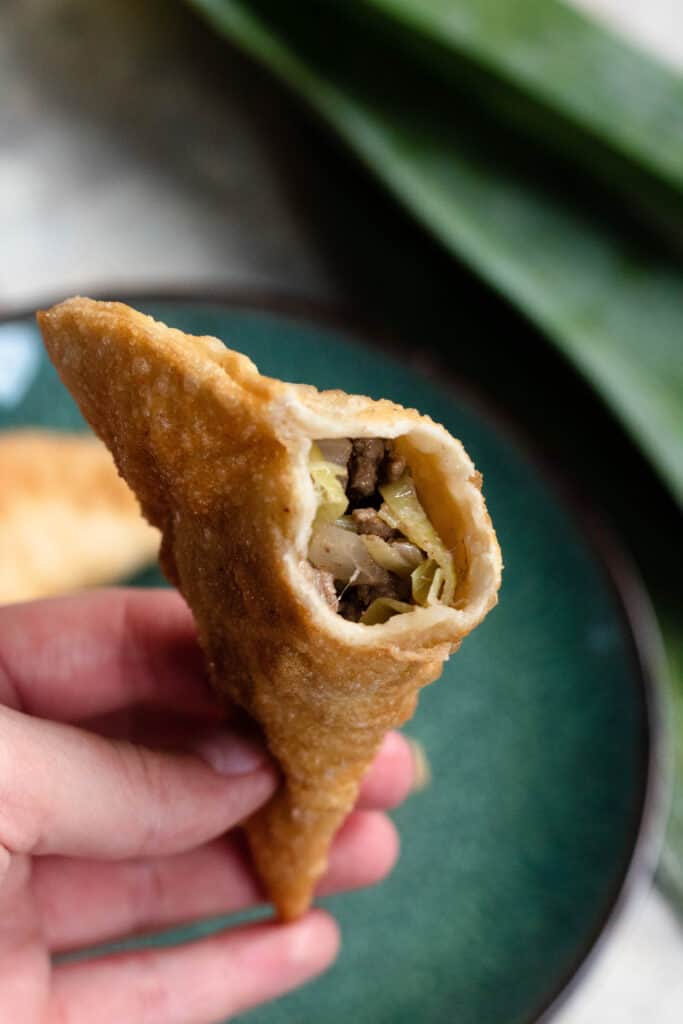
What Should I Serve Them With?
Samosas are famous around the world, and in every country they are served with different sides. In Djibouti, it is typical to eat Samosa with a Tomato and Chili sauce.
In other parts of the world, Samosas are normally served with a chutney, particularly with cilantro and mint. This combination is more popular in India than it is in Djibouti, but it does taste delicious.
How Do I Know my Oil is Hot Enough for Frying?
You will know that your oil is hot enough for frying when you drop a tester piece of dough in the oil and it begins to bubble after 3-5 seconds.
My (secret) favorite trick actually uses a wooden, unfinished chopstick. I stick my chopstick point side down in the oil, perpendicular to the pan. If the oil starts to bubble around the wood after 3-5 seconds, I know that my oil is hot enough to fry with.
Did you like this recipe about How to Make Samosas? If so, make sure to check out these other recipes that I picked out just for you!:
- Fried Leek Pastries
- Chinese Steamed Pork Buns
- Banana Fritters from Djibouti
- Goat Cheese Appetizer with Puff Pastry and Jam
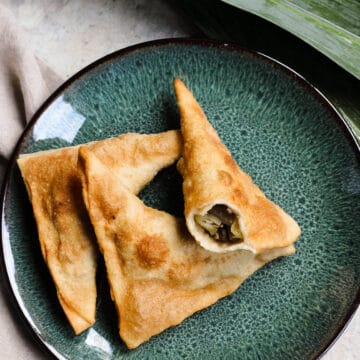
Samosa Recipe
Ingredients
Dough Ingredients
- 2 cups Flour
- ¾ cups Water
- ½ tsp Salt
Filling Ingredients
- 1 Onion, chopped
- 1 cup leeks, chopped into rounds
- 1 tbsp olive oil
- ½ tsp Cumin
- ½ tsp Paprika
- ⅓ tsp Allspice
- 1 lb Lamb
- Salt and pepper to taste
- Oil for frying
Instructions
- In a medium bowl, mix the flour with the salt water a few tablespoons at a time, using your hands to combine. The dough should come together in a smooth ball that is not sticky or crumbly! Cover with plastic wrap and set aside.
- Heat 1 tbsp olive oil in a pan over medium heat. Add the onions and leeks and saute for a few minutes until they begin to cook. Add the seasonings and cook for another minute.
- Add the lamb into the pan, using a spoon to break the meat up. Cook until meat is fully browned. Remove from heat.
- Flour a clean surface and lay your dough onto the surface. Use a rolling pin to roll out your dough as thin as possible, making it almost paper thin. Cut the dough into 4 inch squares, re-rolling the scraps as necessary
- Lay your squares on the surface in front of you, and put about 1 tbsp of filling in each. Brush the edges of the square with water. Fold diagonal corners to meet each other, making a triangle. Use your fingers to press the edges together.
- Heat oil in a frying pan until it is hot enough that your test samosa bubbles within 3-5 seconds of being dropped into the oil. Cook until browned on one side, then flip and cook until brown on the other.
- Remove to a paper towel-lined plate. Serve and enjoy!
Notes
- Lamb: Lamb is my favorite option for ground meat, so I happily added lamb meat to this recipe. If you want to try something a bit easier to find, feel free to sub ground beef. If you want to try a more traditional meat in your samosa, consider trying goat instead. I’ve never made this recipe with goat, but plenty of articles tell me that eating goat is a common practice in Djibouti.
- Leeks: I love working with leeks. They’re not a typical ingredient in my kitchen, but every recipe I make with them (like this Cornbread with Leeksi) turns out spectacularly! When preparing your leeks, take great caution. Leeks are by far the dirtiest vegetable I have ever worked with, and need to be cleaned out very well to avoid getting a mouthful of dirt. Wash and scrub your leeks under cold water. If you are using the leaves of your leeks for any purpose, peel them apart, washing between each leaf. Dirt loves to hide down near the stem and is often missed if the leek isn’t cleaned properly. For more information, check out this video.
- Reserve a few pieces of your dough in order to test your oil. You want to make sure that your oil is hot enough to fry before adding an entire Samosa into the mix. To do this, reserve some of the dough and add it into the oil. If it begins to bubble after 3-5 seconds, your oil is hot enough to fry!
- To reheat Samosas, place them on an aluminum foil-covered cookie sheet in the oven. Bake at 350 degrees Fahrenheit until warmed through. Microwaving samosa will make them soggy, but this method will achieve perfectly crispy leftover samosas!
- Though not traditionally Djiboutian, Samosas in other cultures are often filled with peas, potatoes, and more! You can even experiment with out of the box ideas. Check out this article with 21 Delicious Samosa Filling Ideas for more inspiration.



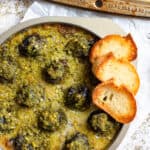
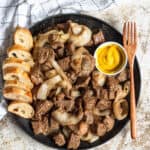

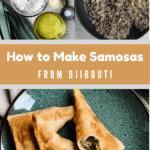
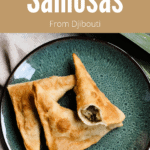

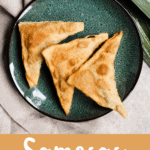
Leave a Reply